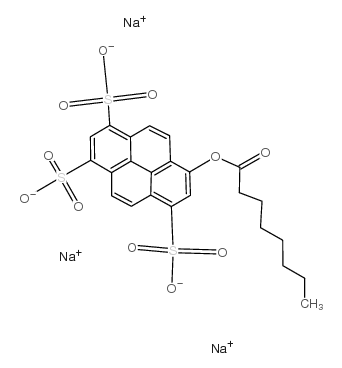8-Octanoyloxypyrene-1,3,6-trisulfonic acid trisodium salt Suppliers
Total count: 1Updated Date: 2024-08-06 09:39:40

- China(Mainland)
- Contact: Yang
- Phone: 0086-021-52280163
- Email: sales@echemcloud.com
- Website: http://www.echemcloud.com
- Product Name: 8-Octanoyloxypyrene-1,3,6-trisulfonicacidtrisodiumsaltsuitableforfluorescence,
- Updated Date: 2024-07-15 12:30:18
- Purity: 98.0%
- More information
Inquiry
8-Octanoyloxypyrene-1,3,6-trisulfonic acid trisodium salt
- CAS Number: 115787-84-3
- Molecular Formula: C24H21Na3O11S3
- Molecular Weight: 650.58100

8-Octanoyloxypyrene-1,3,6-trisulfonic acid trisodium salt price
Related product suppliers
Check more product suppliers